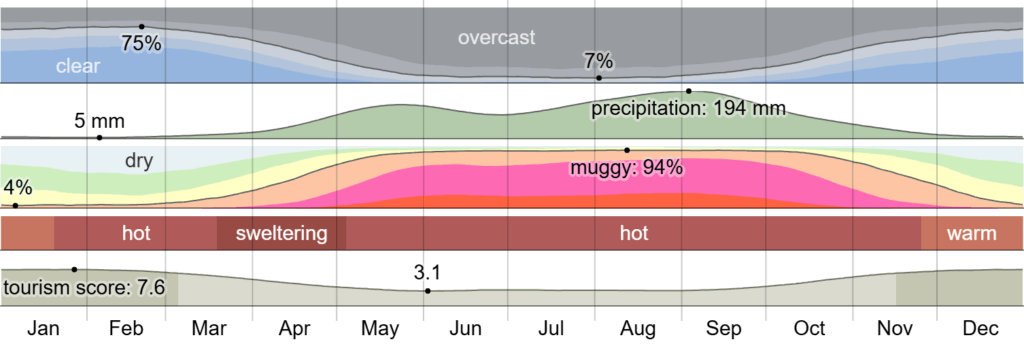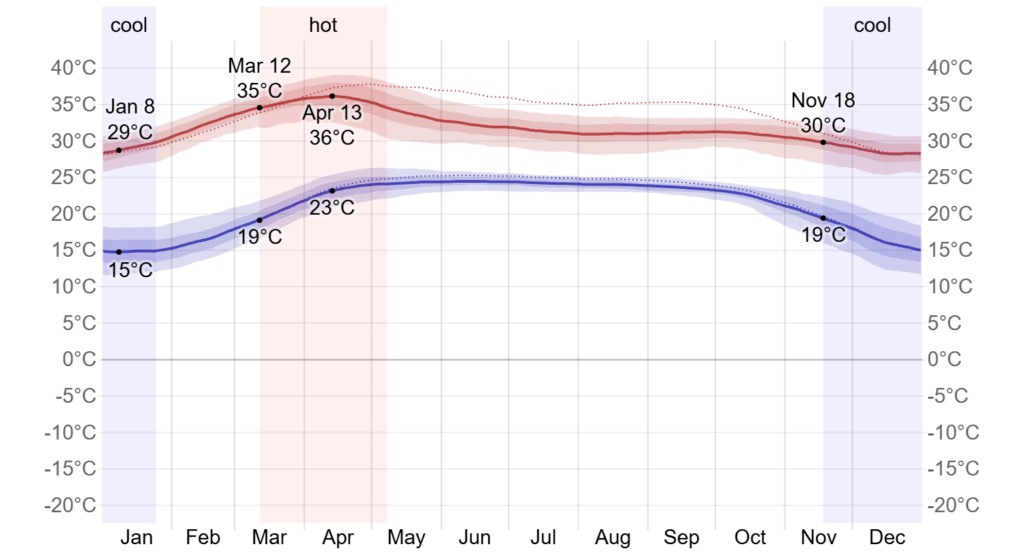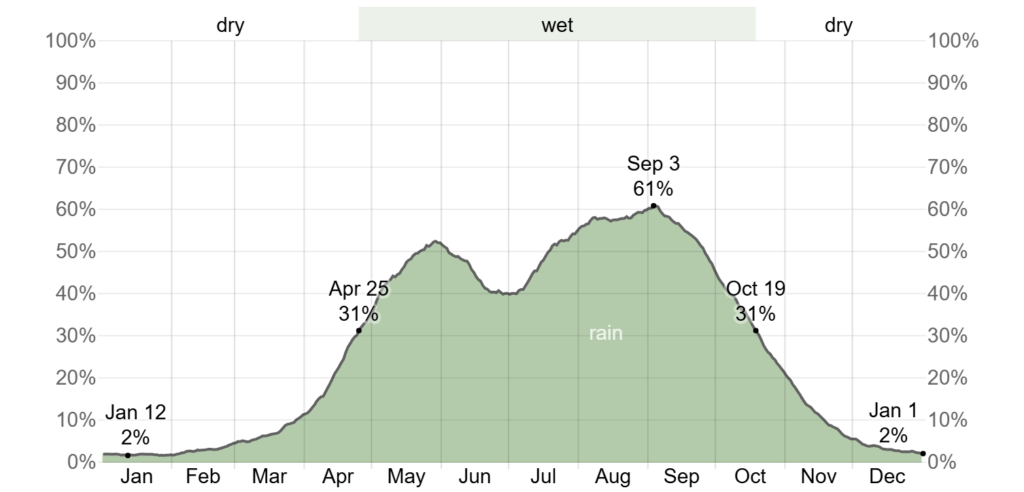The weather you can expect when visiting Chiang Mai depends of course on the season. Chiang Mai’s climate can be roughly divided in three seasons, the rainy season, the dry and cool season, and the dry and warm season. Knowing these seasons will help you decide when are the best months to visit Chiang Mai.
If you want a lot of details about climate in Chiang Mai, visit WeatherSpark.com. The following graphs are from that site:

Source: WeatherSpark.com

Source: WeatherSpark.com

Source: WeatherSpark.com

Source: WeatherSpark.com
Seasons in Chiang Mai
Chiang Mai has six wet months (May-October) which can be called the rainy season. During these wet months the weather is relatively warm and air humidity is high (30-65%). This wet weather is caused by the south-west monsoon, which usually arrives from India during the month of May. Most rain can be expected during August and September.

The other six months (the north-east monsoon) may be called the dry season, but within this dry season you can distinguish a cooler period (November-February) and a warmer period (March-May). Throughout the dry seasons the air humidity is relatively low (5-25%).
Compared to the central and southern parts of Thailand, Chiang Mai is slightly cooler and enjoys a lower relatively humidity. It is especially this lower humidity which contributes to the nice climate in Chiang Mai.
Note that especially during December and January, which you could call the Chiang Mai winter, the evenings are very cool and you will need some warm clothes during this period. A sweater or jacket will be needed after sunset, but during daytime you can walk around in shorts and t-shirts.
When to visit Chiang Mai
If you enjoy a rainy holiday, just come in August or September and you will get what you deserve. Most people however will opt for the Chiang Mai winter season and enjoy the dry and slightly cooler weather. The best months to visit are probably from October to January.

During October-November you still may get some rain, but the advantage is that so soon after the rainy season everything is still green and clean and the many waterfalls near Chiang Mai are still with a lot of water. December and January have excellent weather, warm during the day and cool during the evening and night. You will need a sweater or jacket after sunset. Towards the end of February and in March temperatures are going up, and as it has not rained for several months the environment gets rather dry and it can be quite dusty.
From January to April, Chiang Mai often suffers from air pollution caused by forest and bush fires, but also because farmers tend to burn their old rice fields in preparation for the new season. All these fires cause a lot of smoke and dust, which probably make March and April the worst months to visit Chiang Mai. Sometimes this smog starts already in February or even January and it can last longer if rains come late.

April dry and usually very hot, but a visit during the middle of April is still worthwhile as you can enjoy the yearly Songkran festival, which celebrates the Thai New Year. The monsoon rains usually start in May, reaching their peak during August and September. With the monsoon rains, the sky gets cleaner as all the smoke and dust is washed out or blown away.

